7 Essential Content Optimization Techniques for Growth


Over 70 percent of marketers say audience understanding is the single greatest factor in content success. When you know exactly who you are speaking to, every word feels personal and relevant. Tailoring your message to real motivations and preferences turns passive readers into active fans who return, share, and trust what you say.
Table of Contents
- 1. Understand Your Audience For Targeted Content
- 2. Use Keyword Research For Higher Visibility
- 3. Structure Articles For Easy Reading
- 4. Optimize Meta Tags For Better Click-Throughs
- 5. Enhance Content With Visual Elements
- 6. Leverage Internal And External Linking
- 7. Analyze Performance To Continuously Improve
Quick Summary
| Takeaway | Explanation |
|---|---|
| 1. Understand your audience deeply. | Create detailed audience personas to tailor your content effectively to their needs and interests. |
| 2. Conduct thorough keyword research. | Identify relevant keywords and phrases to align your content strategy with your audience's search behavior. |
| 3. Structure articles for better readability. | Use clear headings, short paragraphs, and bullet points to make your content easily scannable and engaging. |
| 4. Optimize meta tags for higher click-through rates. | Craft compelling titles and descriptions that accurately reflect the content and use action-oriented language. |
| 5. Analyze performance regularly. | Continuously assess key metrics to refine your content strategy based on audience engagement and evolving needs. |
1. Understand Your Audience for Targeted Content
Knowing your audience is the foundation of creating content that truly resonates. Without understanding who you are speaking to, your content will feel generic and fail to connect.
According to research from the American Marketing Association, developing a content marketing strategy requires thorough audience research to identify specific needs, preferences, and behaviors. This means going beyond basic demographics and diving deep into understanding your readers motivations, challenges, and goals.
To effectively understand your audience, start by creating detailed audience personas that map out specific characteristics:
- Demographic information like age, location, profession
- Professional challenges and pain points
- Information consumption habits
- Preferred content formats and platforms
- Key decision making factors
Practical research techniques include conducting surveys, analyzing website analytics, reviewing social media interactions, and examining customer feedback. These methods help you gather nuanced insights about what truly matters to your target audience.
Understanding your audience allows you to craft content that speaks directly to their needs, creating a powerful connection that drives engagement and builds trust. When your content feels like it was written specifically for them, readers are more likely to stay, learn, and take action.
Remember: Great content is not about what you want to say. It is about what your audience wants to hear.
2. Use Keyword Research for Higher Visibility
Keyword research serves as the strategic blueprint for driving organic traffic and improving your content visibility in search results. Understanding the precise language your audience uses can transform your content from invisible to irresistible.
According to research from the University of Georgia Office of Information Technology, keyword research involves identifying terms and phrases your target audience actively searches. This process helps you plan content strategies that directly align with audience interests and search behaviors.
To conduct effective keyword research, follow these strategic steps:
- Use free and paid keyword research tools
- Analyze search volume and competition levels
- Identify long tail and short tail keywords
- Understand user search intent behind keywords
- Evaluate keyword difficulty and ranking potential
Practical keyword selection means looking beyond raw search numbers. What Is Keyword Research in Digital Marketing? shows that successful strategies prioritize relevance and user intent over pure volume.
Most businesses overlook the nuanced approach to keyword research. It is not just about finding popular terms but understanding the deeper motivations behind search queries. A keyword with lower volume but higher relevance can often drive more meaningful engagement than a high volume generic term.
Remember: Great keyword research connects your content directly to what your audience is actively seeking. Your goal is to become the answer they are looking for.
3. Structure Articles for Easy Reading
Readers decide within seconds whether your content is worth their time. Creating a well structured article can be the difference between engaging your audience and watching them click away.
According to research from Carnegie Mellon University, utilizing clear headings effectively structures your content and makes it more accessible to both readers and search engines. Think of your article like a roadmap that guides readers smoothly through your information landscape.
To create an easily digestible article, focus on these key structural elements:
- Use a clear hierarchy of headings
- Break long paragraphs into shorter chunks
- Include white space between sections
- Use bullet points for complex information
- Write descriptive subheadings that preview content
The goal is to make your content scannable and approachable. Most online readers do not read word for word. They scan headings and highlighted text to determine if the content matches their needs. Understanding Creating Relevant Content for Your Audience emphasizes the importance of making your content immediately comprehensible.
Think visually about your content. Paragraphs should rarely exceed 3 to 4 sentences. Use formatting like bold text and strategic line breaks to create visual rhythm. Your readers should feel like they are gliding through information rather than trudging through dense text.
Remember: Good structure transforms your content from a wall of text into an inviting reading experience that keeps people engaged.
4. Optimize Meta Tags for Better Click-Throughs
Meta tags are your content's first impression in search results. They are the make or break element that determines whether users click through to your website or scroll past.
According to research from Purdue University, meta tags including titles and descriptions are crucial for improving click through rates. These small snippets of text serve as a critical marketing moment where you convince potential readers that your content is exactly what they need.
To craft compelling meta tags that drive engagement, focus on these strategic elements:
- Keep titles under 60 characters
- Include primary keywords naturally
- Write descriptions between 150 to 160 characters
- Create unique tags for each page
- Use action oriented language
Your meta title should function like a headline. It needs to be clear, concise and promise value. The Ultimate Guide to Meta Tags suggests treating these brief texts as mini advertisements for your content.
Think about search intent when crafting meta tags. Users want to know exactly what they will get by clicking. Avoid generic phrases. Instead use specific language that speaks directly to the problem your content solves.
Remember: Great meta tags transform casual browsers into intentional readers. They are not just technical SEO elements but your content's first opportunity to connect with potential audience.
5. Enhance Content with Visual Elements
Visual elements transform ordinary content into memorable experiences. They break up text, illustrate complex ideas, and keep readers engaged in ways words alone cannot.
According to research from Purdue University, adding high quality images and videos can significantly increase user engagement. These visual assets are not just decorative but powerful communication tools that can simplify complex concepts and make your content more digestible.
To effectively integrate visuals into your content, consider these strategic approaches:
- Use original graphics and images
- Include infographics for complex data
- Optimize images with descriptive alt tags
- Ensure visual relevance to content
- Maintain consistent visual style
- Use high resolution professional images
Think of visuals as storytelling companions to your written content. An well chosen image can communicate emotion, complexity, and nuance faster than paragraphs of text. Infographics can transform dense statistical information into instantly understandable visual narratives.
Remember: Great visuals do not just decorate your content. They amplify your message and create deeper connections with your audience.
6. Leverage Internal and External Linking
Links are the connective tissue of your digital content ecosystem. They guide readers through your content journey while signaling credibility to search engines.
According to Carnegie Mellon University research, strategic linking improves both user experience and search engine optimization. Internal links connect your content ecosystem, while external links demonstrate your commitment to providing comprehensive information.
To implement an effective linking strategy, consider these key approaches:
- Link to relevant internal content
- Choose authoritative external sources
- Use descriptive anchor text
- Maintain a natural link density
- Prioritize user value over link quantity
- Check links for current relevance periodically
External links should function like academic citations. They validate your information, demonstrate research depth, and provide readers additional context. When you link to respected sources, you signal to readers and search algorithms that your content is well researched and trustworthy.
Remember: Great linking is about creating value. Your links should feel like helpful recommendations from a knowledgeable friend.
7. Analyze Performance to Continuously Improve
Content optimization is not a one time task but an ongoing journey of strategic refinement. Without consistent analysis, your content strategy becomes stale and ineffective.
According to research from the University of Georgia, monitoring website traffic and keyword rankings helps in continuously refining content strategies to meet evolving audience needs. Think of performance analysis like a health checkup for your digital content.
To effectively track and improve your content performance, implement these key strategies:
- Set up Google Analytics and Search Console
- Track key performance indicators
- Monitor organic search rankings
- Analyze user engagement metrics
- Review content conversion rates
- Identify top performing content
- Schedule quarterly content audits
Data tells a story. Low performing content is not a failure but an opportunity to learn and improve. Look for patterns in user behavior. Which topics generate the most engagement? Where do readers drop off? These insights become your roadmap for content optimization.
Remember: Your best content strategy evolves with your audience. Stay curious. Stay adaptable.
Below is a comprehensive table summarizing the key strategies for enhancing content effectiveness as discussed in the article.
| Strategy | Implementation | Expected Results |
|---|---|---|
| Understand Audience | Conduct thorough research; Create audience personas | Tailored content that resonates and connects deeply |
| Keyword Research | Use tools; Analyze search volume & competition; Focus on user intent | Increased visibility and organic traffic |
| Structure Articles | Use clear headings; Break into chunks; Use bullet points | Improved readability and engagement |
| Optimize Meta Tags | Include keywords; Write concise titles & descriptions | Higher click-through rates |
| Enhance with Visuals | Use images & infographics; Optimize with alt tags | Increased engagement and retention |
| Leverage Linking | Use internal & external links thoughtfully; Validate with reputable sources | Boosted SEO and credibility |
| Analyze Performance | Use analytics tools; Monitor KPIs & content trends | Continuous improvement and strategy refinement |
Unlock Your Growth Potential with AI-Driven Content Optimization
Struggling to connect with your audience or boost your search rankings despite applying the right content strategies Can you afford to miss out on the power of truly optimized, audience-centered content and smart keyword research With Babylovegrowth.ai, you gain an all-in-one platform that automates high-quality content creation aligned with your audience’s needs and search intent. Benefit from a 30-day personalized content plan that structures your articles for easy reading and optimizes meta tags to improve your click-through rates while leveraging an AI-powered backlink exchange ecosystem to amplify your site's authority and visibility.
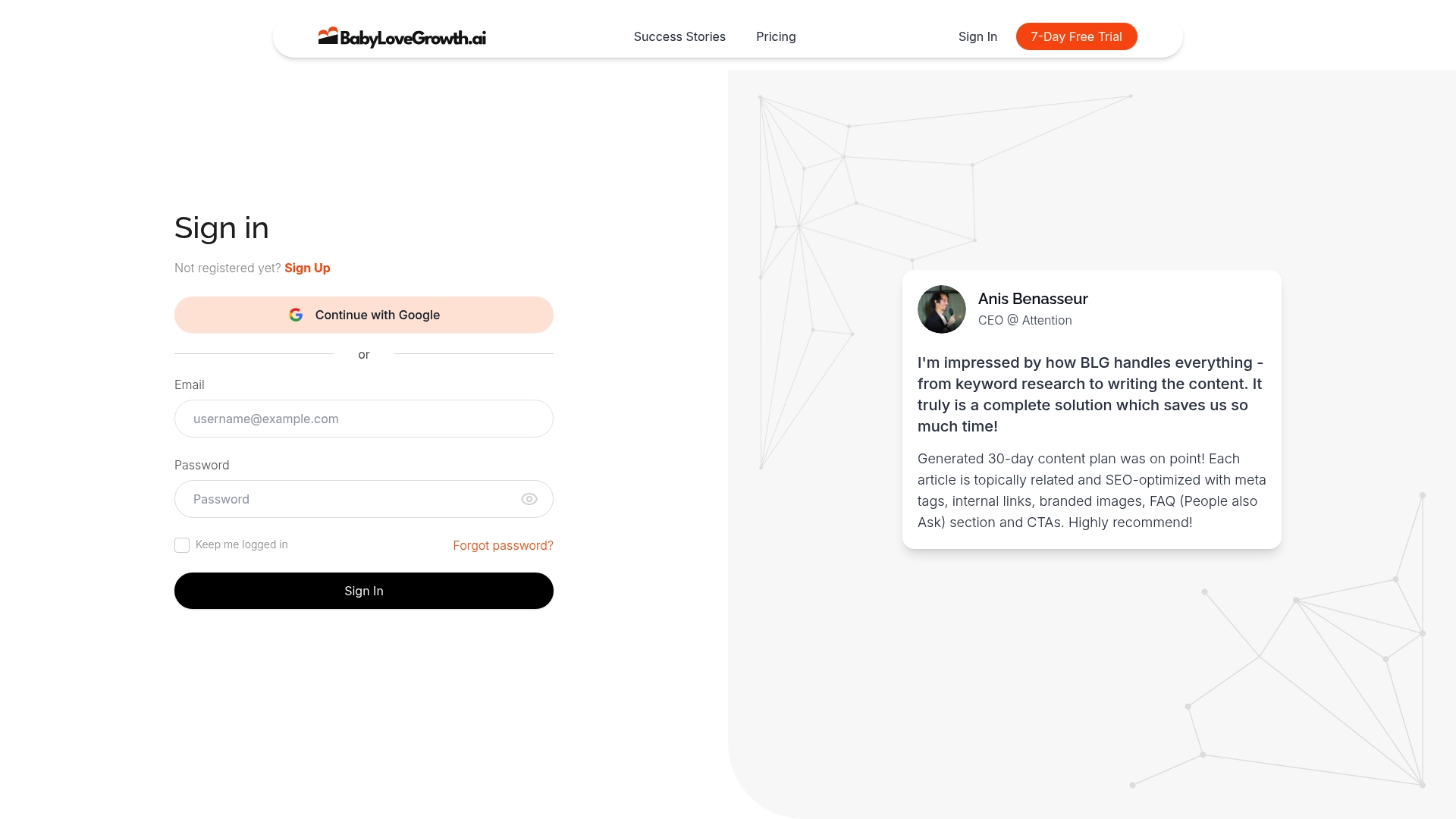
Take control of your content performance now and stop wondering if your efforts will pay off Join countless business owners and marketers who have transformed their growth journey with Babylovegrowth.ai Get started with a free trial today and experience a step-by-step method for SEO on autopilot that drives measurable results. Visit our Ultimate Guide to Meta Tags to see how easy it is to craft compelling snippets that invite clicks or explore how keyword research can become your secret weapon in building visibility. Don’t wait—make your content work smarter and grow faster.
Frequently Asked Questions
What are the essential content optimization techniques for growth?
To optimize your content for growth, focus on understanding your audience, conducting keyword research, structuring articles for readability, optimizing meta tags, enhancing content with visuals, leveraging internal and external linking, and analyzing performance. Start implementing these techniques to see improvements in engagement and traffic.
How can I create audience personas to improve my content?
To create effective audience personas, gather demographic information, identify professional challenges, and understand your readers' content preferences. This can help you tailor your content to address their specific needs and increase engagement.
What steps do I need to follow for effective keyword research?
For effective keyword research, identify terms your audience searches for, analyze search volume and competition levels, and understand user intent. Use this information to select relevant keywords that align with your content strategy, aiming for a mix of long-tail and short-tail keywords.
How do I structure my articles to enhance readability?
Structure your articles by utilizing clear headings, breaking up long paragraphs, and creating bullet points for complex information. Ensure your content is scannable, allowing readers to quickly absorb the information, which can increase time spent on the page.
What should I include in my meta tags to improve click-through rates?
Craft compelling meta tags by keeping titles under 60 characters, including relevant keywords, and writing enticing descriptions between 150 to 160 characters. Make your meta tags clear and action-oriented to encourage users to click on your content.
How can I effectively analyze my content's performance?
To analyze your content's performance, set up tracking tools like Google Analytics and monitor key performance indicators, user engagement metrics, and conversion rates. Regularly review your content to identify patterns and opportunities for improvement, adjusting your strategy accordingly.
Recommended
Smart SEO,
Faster Growth!
Most Read Articles
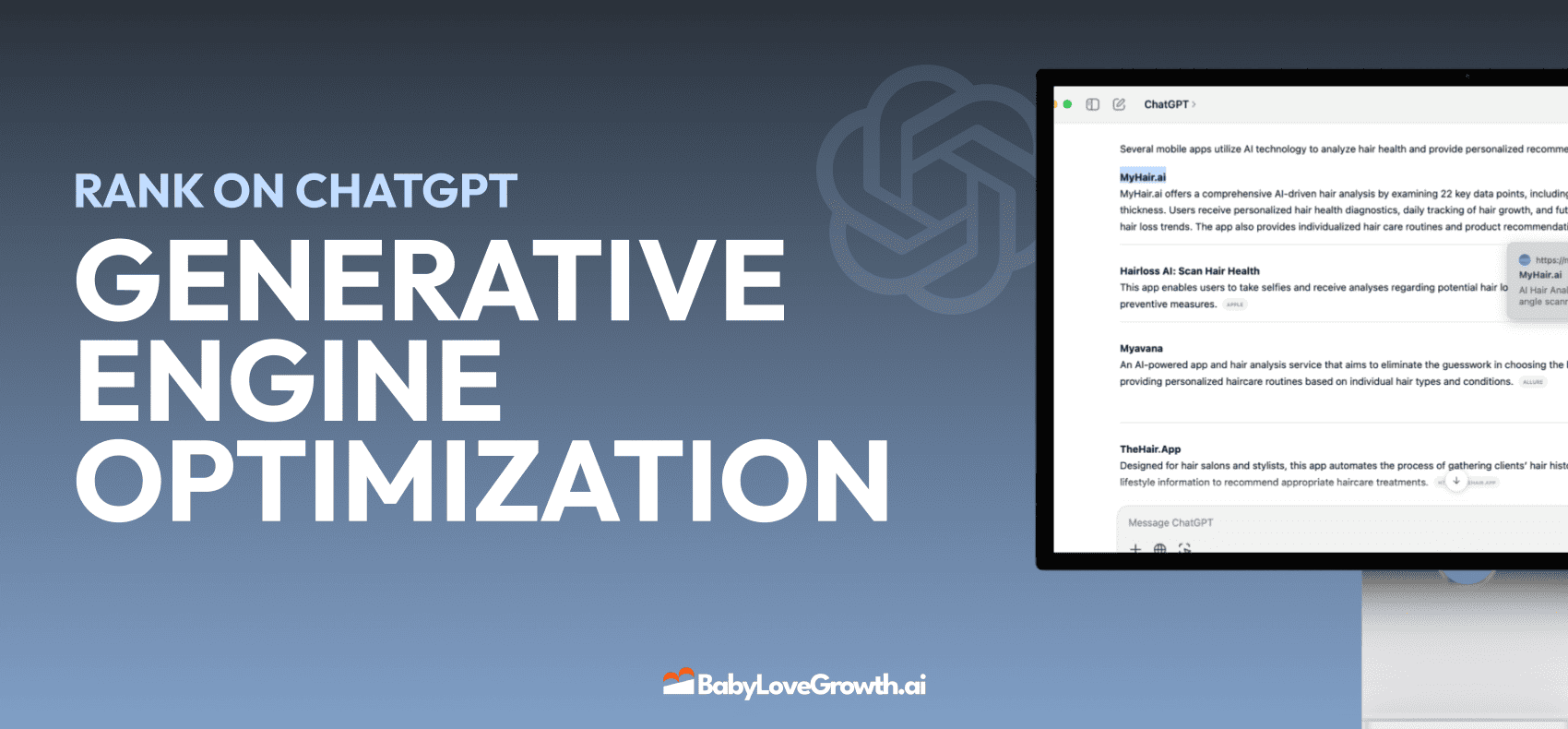
Generative Engine Optimization (GEO)
Learn how Generative Engine Optimization (GEO) helps your content rank in AI search engines like ChatGPT and Google AI. This comprehensive guide explains the differences between SEO and GEO, why it matters for your business, and practical steps to implement GEO strategies for better visibility in AI-generated responses.
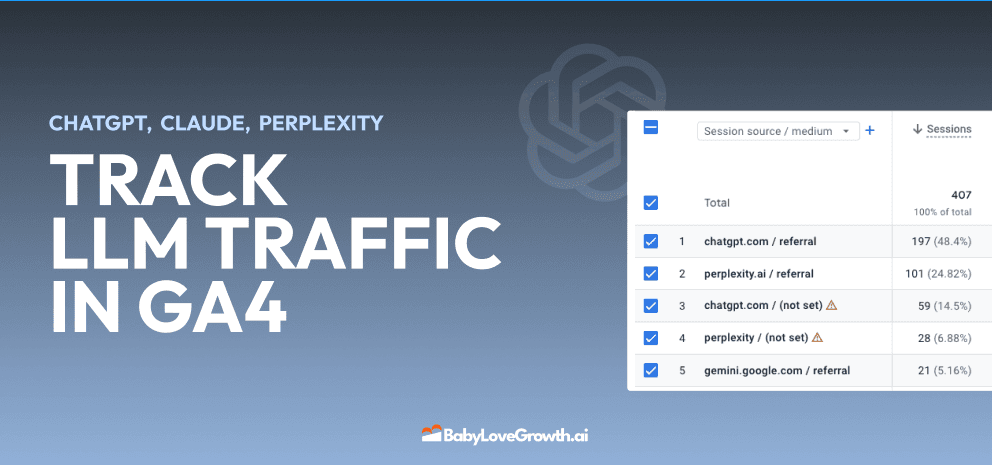
Track LLM Traffic in Google Analytics 4 (GA4)
Learn how to track and analyze traffic from AI sources like ChatGPT, Claude, Perplexity, and Google Gemini in Google Analytics 4. This step-by-step guide shows you how to set up custom filters to monitor AI-driven traffic and make data-driven decisions for your content strategy.
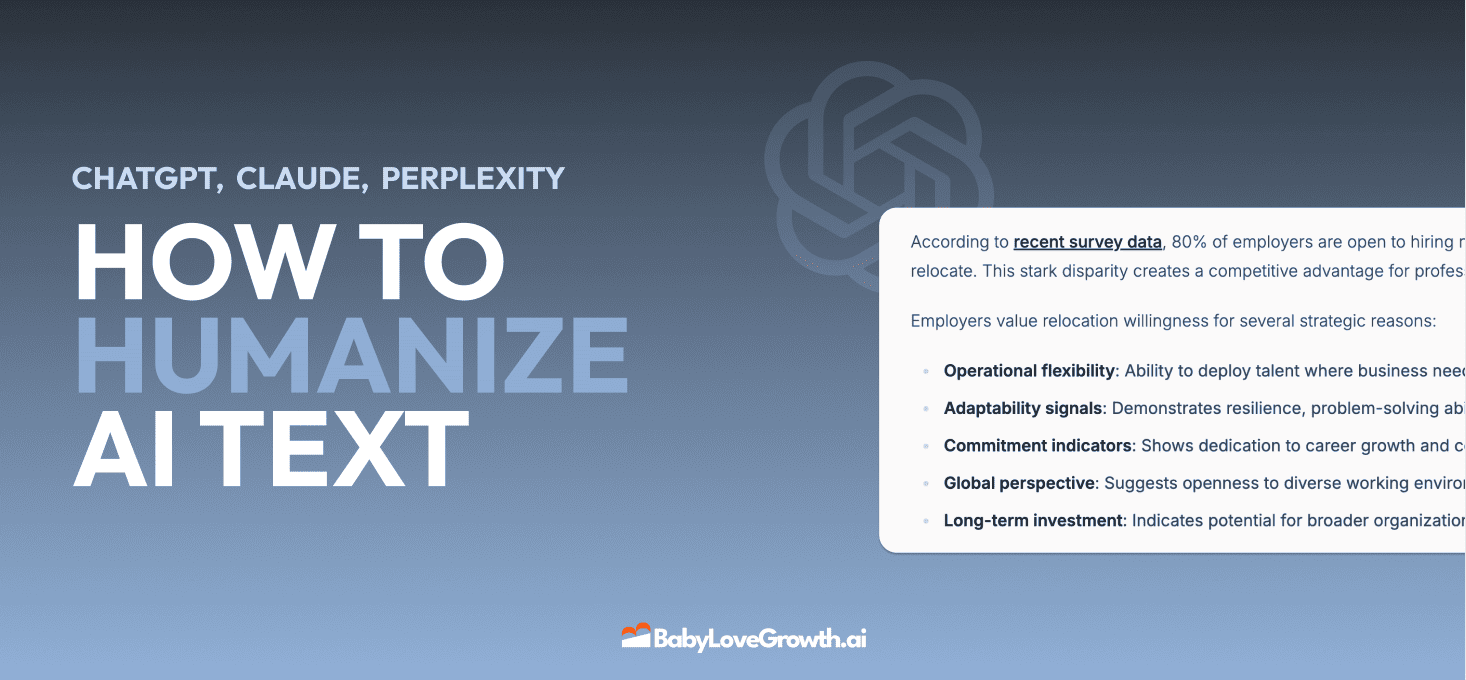
How to Humanize AI Text with Instructions
Learn practical techniques to make AI-generated content sound more natural and human. This guide covers active voice, direct addressing, concise writing, and other proven strategies to transform robotic text into engaging content.
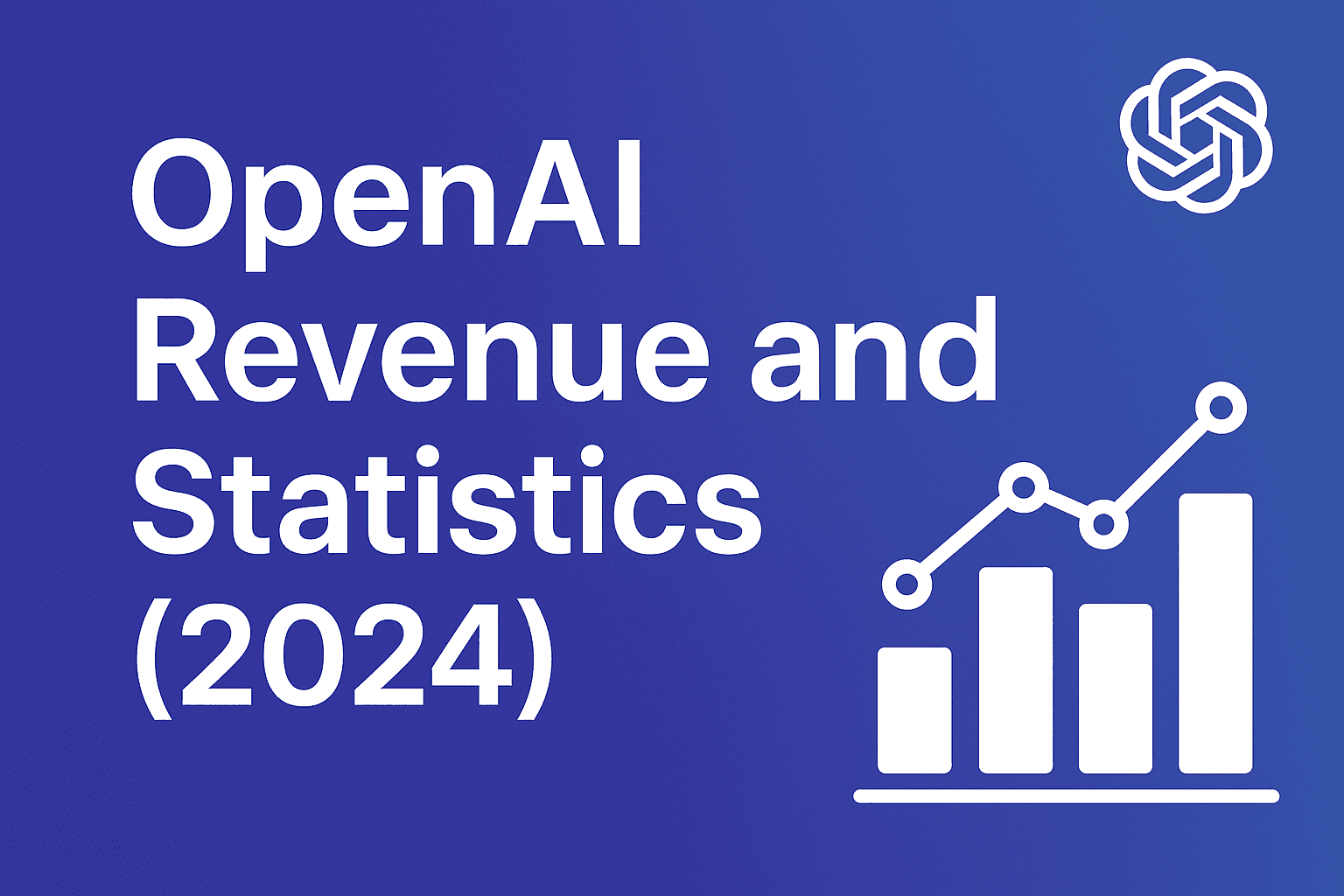
Open AI Revenue and Statistics (2024)
Comprehensive analysis of OpenAI financial performance, user engagement, and market position in 2023. Discover key statistics including $20B valuation, $1B projected revenue, and 100M+ monthly active users.